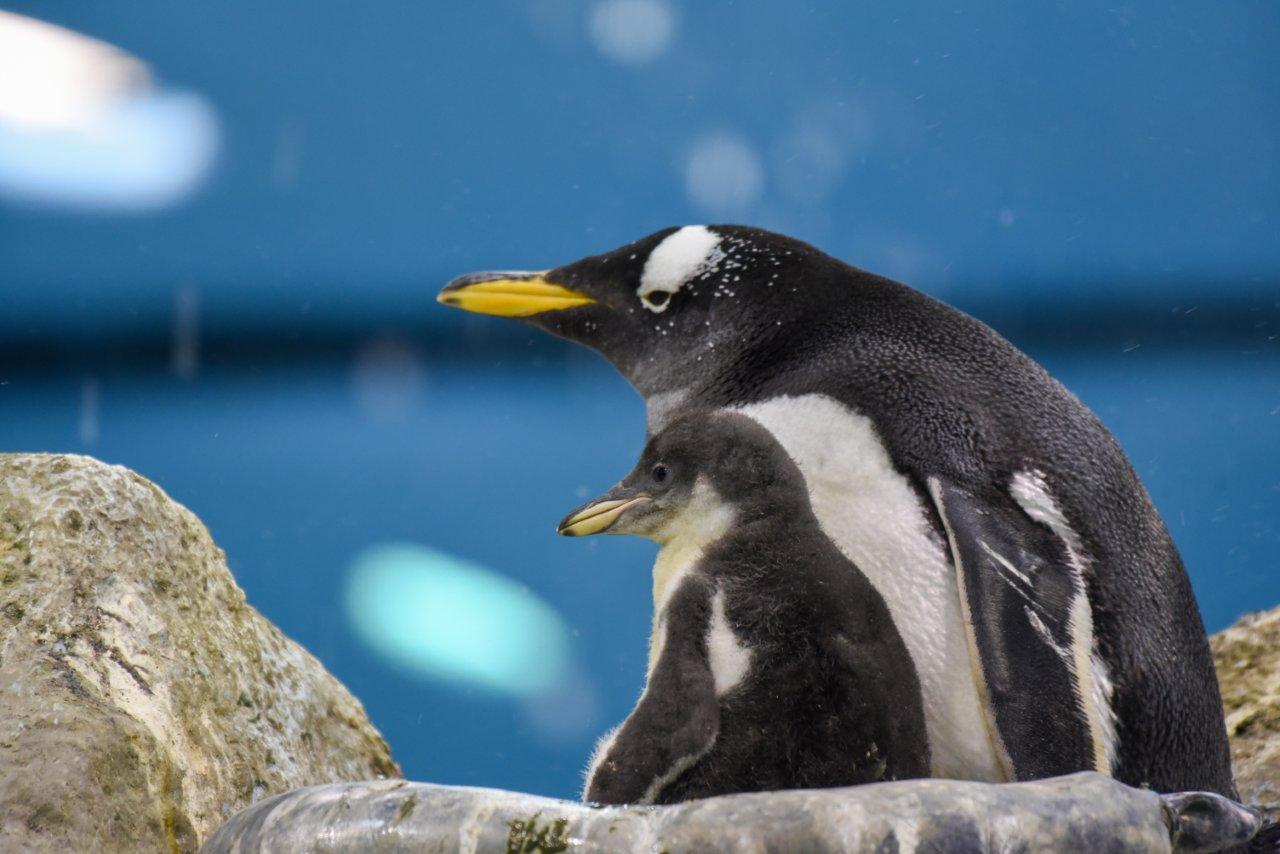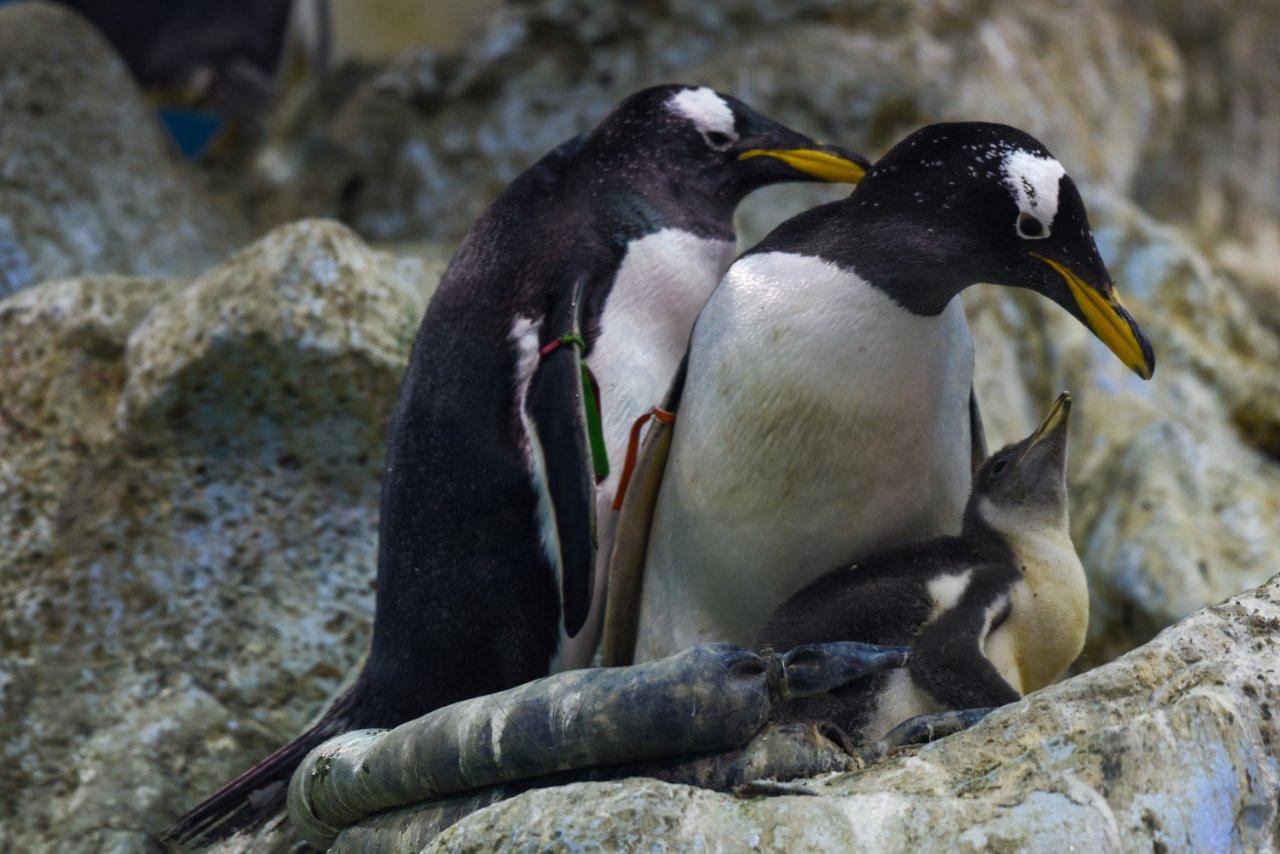After the baby boom enjoyed by Loro Parque in 2019, they have welcomed the New Year with the birth of numerous penguin nestlings of different species. Particularly noteworthy are the birth of several Rockhopper Penguin chicks, a species that is catalogued as “in danger of extinction” according to the International Union for the Conservation of Nature (IUCN) and whose population is decreasing in the wild.
It is a species that is very difficult to reproduce and their arrival in the Parque is the result of the great work of the Penguinarium team, which has dedicated a lot of time and effort to the young, taking care of every detail during their incubation and growth. Now, they can be seen in the Baby Penguin section of the exhibition, until they can join the rest of the Antarctic penguin family.
Following this breeding season, which takes place every year around this time, Loro Parque has also welcomed new Gentoo and King Penguins, some of which are with their parents in the main exhibition, while others remain in quarantine or, like the Rockhopper Penguins, in Baby Penguin.
The birth of new specimens is always an excellent indicator of animal welfare, because it guarantees that their needs are being met and, consequently, they manage to reproduce without difficulty. Thus, for example, the famous and beloved female King Penguin Geisha, who was welcomed into this authentic animal embassy in August 2003, has already seen the birth of children, grandchildren and great-grandchildren in the Parque.
This is possible, to a great extent, due to the commitment of the Portuense zoo to the excellence and care of every detail, thanks to which its facilities always benefit from the highest quality. Thus, in addition to recreating the natural habitat of these species by generating 12 tons of snow per day, the normal light cycles of Antarctica are also respected, simulating, in real time, the changes of season as they occur in this remote part of the planet.
According to Rafael Zamora, Scientific Director of the Loro Parque Foundation, penguins will be one of the birds that will suffer most from the effects of climate change because their relationship with the Antarctic marine environment is so direct that even the slightest modifications will influence their populations. “It’s worrying to know that the penguins are modifying their behaviour to try to adapt to the changes” says Zamora “because this does not mean that all the different species will manage to overcome the process without becoming extinct”.
Furthermore, in contrast to what happens every year in the facilities at Loro Parque, many specimens in nature are not reproducing due to the stress of the changes in their environment. Thus, the reduction of the frozen area, which they inhabit or the absence of fish to feed on means that there is no guarantee that their offspring will survive.
The Foundation’s Scientific Director has also stressed the value of the ex-situ scientific work carried out in the Parque. “It’s generating very valuable data for the conservation of the different species, data that is practically impossible to obtain in the wild due to the extreme habitats in which penguins live.”
Thus their weights, incubation times, behaviour indicators, dietary requirements and studies of their longevity or blood parameters, among other factors, are key in cases of the necessity of rescue due to natural disasters or for the design of conservation plans in the wild.
In Loro Parque, visitors can learn about these species and the threats they face in their natural environments, and it is in its facilities where they can really see how important it is to contribute to their protection.












